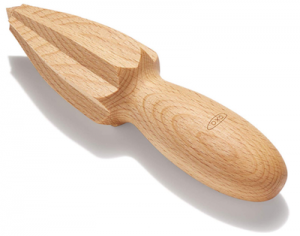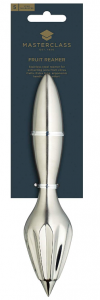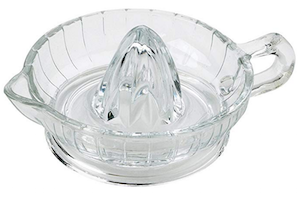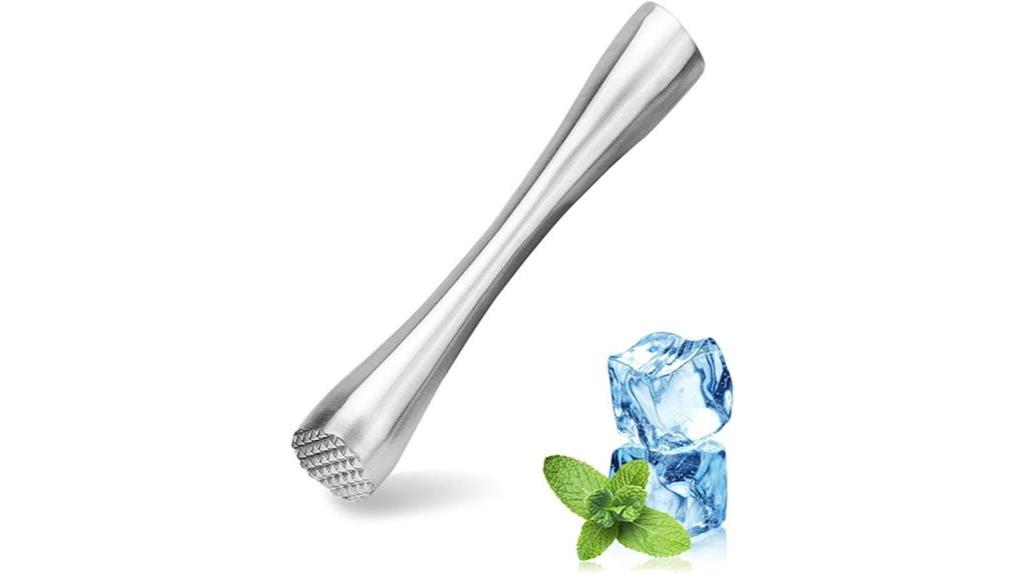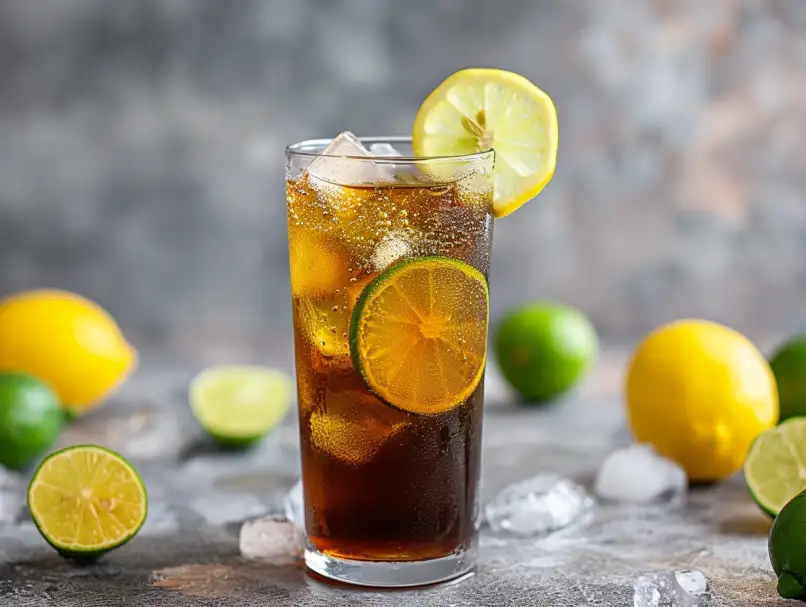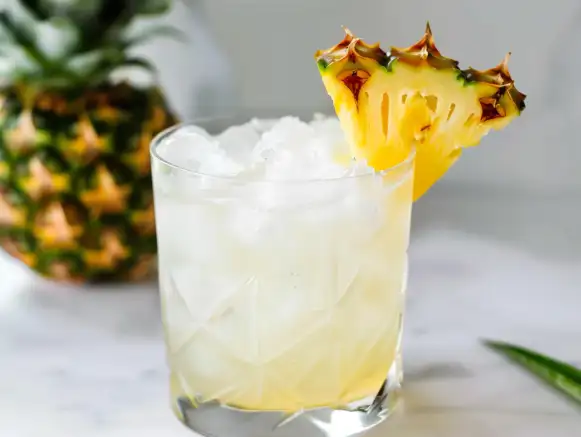What is a Citrus Juicer?
Also called a reamer, a citrus juicer is a device that is used to extract the juice from citrus fruits by essentially drilling it out. There are two kinds of reamers available: a smaller version that is simply called a handheld reamer, and a larger version that is often referred to as a lemon juicer.
The handheld reamer consists of a handle at one end, and a conical blade at the other that has a series of ridges running from the base to the tip. This style of reamer is often made of wood or plastic. To use it, you hold it over the glass and place the centre of your halved fruit on the tip. Next, push the fruit down onto the blade while twisting.
The lemon juicer consists of a conical ridged blade that is either in the centre of a collecting bowl, or in the centre of a strainer that sits on top of a collection container. This style of reamer is often made of glass or plastic. Like the handheld reamer, halved fruit is placed on top of the cone, pushed down and twisted to extract the juice, which then runs into the bowl or collection container.
If you’re looking for a citrus zester rather than a juicer, click here.
The History of the Citrus Juicer
The first known lemon juicer came from Kütahya, Turkey, and dates back to the early 18th century. These were crafted in a traditional Turkish pottery style and bore only the slightest resemblance to our modern juicers. These older versions were used to make a popular citrus drinks known as sorbet. What made them especially unusual was that lemons were not actually native to Turkey—they were imported from their native countries to Constantinople, the capitol of ancient Turkey.
Through the trade routes, these juicers (and the fruit they were used on) found their way to the Americas.
By the end of the 19th century, there were many different models being patented in the USA and Canada. The oldest patent for a juicer in the Americas was issued to Lewis S. Chichester on July 3, 1860, for his cast iron handheld model.
The basic design of the two types of reamers has not changed much since the 19th century, although the style with the collection bowl tends be the more popular of the two types.
Available Handheld Reamers
This wooden reamer is simple but highly effective. It removes the need for a collector container, allowing you to just add juice directly to the glass. It is compact and the smooth oiled finish ensures that it is both easy on your hands and easy to clean.
Master Class Stainless Steel Lemon Juicer
This handheld reamer combines an elegant design with durable material and functionality. The stainless steel material offers a comfortable weight, while the long handle fits the average hand nicely, allowing for ease of use. The Master Class Lemon Juicer is dishwasher safe, so clean-up is a cinch.
Available Collection-Style Reamers
Made of heavyweight glass, this style is what most people imagine when they think of what a modern juicer looks like. It’s long, broad reaming blade is effective at extracting juice from citrus fruit, while the deep bowl and pour spout make collecting and pouring juice easy and relatively mess-free. This simple reamer is easy to use, and much more economical than an electric juicer or blender. Although it is made of durable glass that resists scarring from the acidity in citrus juice, this model is best washed by hand.
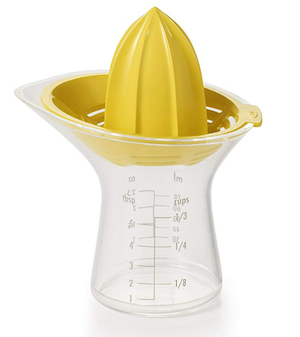
OXO Good Grips Small Citrus Juicer
The perfect size for extracting and measuring juice for cocktails, this juicer features a flow-through reamer blade and a 2.5oz collection vessel complete with measurements. When exact amounts are important, this is the model of juicer you will want! This reamer is made of durable BPA-free plastic, meaning that it is food-safe and can take a beating.

